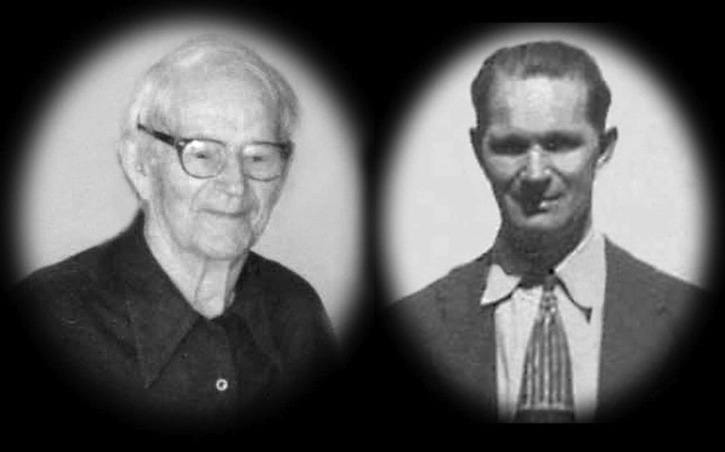While we’re mostly used to reading about the early Scots, Brits and French Canadian immigrants to our region, as time went on there were many other immigrants as well. The Norwegians, Swedes and Danes seemed particularly attracted to the forests and fjords of British Columbia, so similar to where they grew up.
Typical, perhaps, were brothers Herman and Sverre Hansen, growing up north of the Arctic Circle at Alta, Norway. In 1923 Herman arrived at the age of 24, connected with an elder brother barbering in Vancouver, and found work building railway grades as a beginning in the new country. He also chopped cordwood and soon was taken under the wing of a faller, and began learning the skills of a woodsman, on Cortes Island. Between contracts, walking in Vancouver’s Stanley Park on a Sunday, he met Anna, a Swedish girl, and it wasn’t long before the two were married.
Pulling on a crosscut saw, felling the giant Douglas-fir timbers, was the work of a two-man crew, and soon Herman thought to write to younger brother Sverre back in Norway. Brother Sverre arrived with his wife Dagne, and the two Hansen families were based at camps at Elk Bay and the Lake Cowichan area for the next few years.
Also falling timber at the time was Icelander Byron Johnson, whose family lived on the Sooke River, and it was Byron who led them to look for acreages in Sooke. By 1930 Herman and Anna, with two toddlers Mary and Henry, had purchased FIVE acres on Parkland Road, part of the new subdivision of Saseenos. Their youngest son Robert was born soon after.
Sverre, meanwhile had acquired acreage on Harbourview Road, also in the Saseenos subdivision, where he settled with Dagne and the two sons born to them while in camps, Lloyd and Peter. Twins Norman and Arnold joined the family soon after, followed by Gerhart and then the baby of the family, a girl at last, Irene.
Both Herman and Sverre were well-muscled fallers and their strength showed as they pulled a crosscut saw in tandem. By the mid-1930s they were falling for Elder Logging in the watershed at Muir Creek, felling the giant Douglas-fir, the timber that became so well-known and prized in the construction of bridges and buildings.
One can see from the photos, that Sverre, on the right is shown as a young father, who sadly was lost to illness long before his time, while Herman, at left, lived to be 94. It is notable that three of Sverre’s sons, Pete, Arnold and Gerhart, carried on their father’s tradition of falling, where they each became very skilled. Making their homes in Sooke, Arnold and Gerhart in particular made great contributions to their hometown by their years of efforts supporting the Sooke Community Association, the logger sports shows and All Sooke Day.
In Herman’s family, it was eldest son Henry “Hank” who went into the forest industry, following a route of working summers at Elder Logging to earn a Forest Engineering degree from UBC. After he had become general manager of the Western Forest Products conglomerate in Vancouver, he was often out at the Jordan River operation on his trips around the province.
At the museum, I was particularly appreciative of Hank’s support when he sent a cheque from Western Forest to help us in producing the 18 mm film “THE ALL SOOKE DAY STORY” in 1986.
Elida Peers,
Historian
Sooke Region Museum
